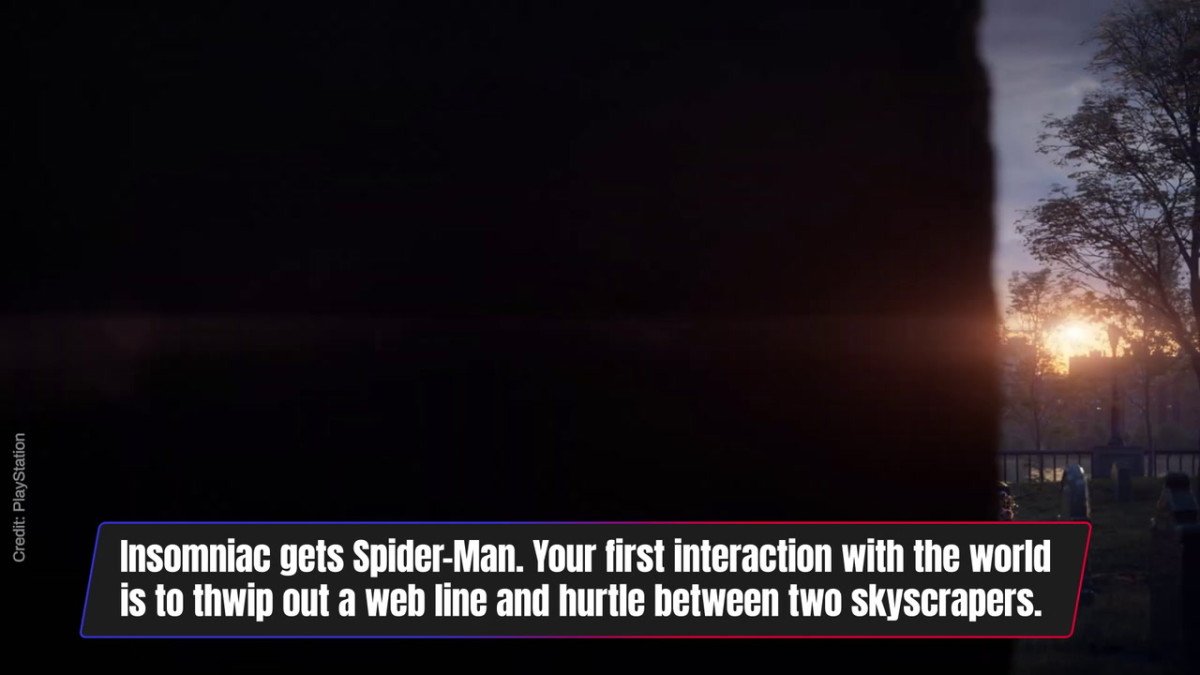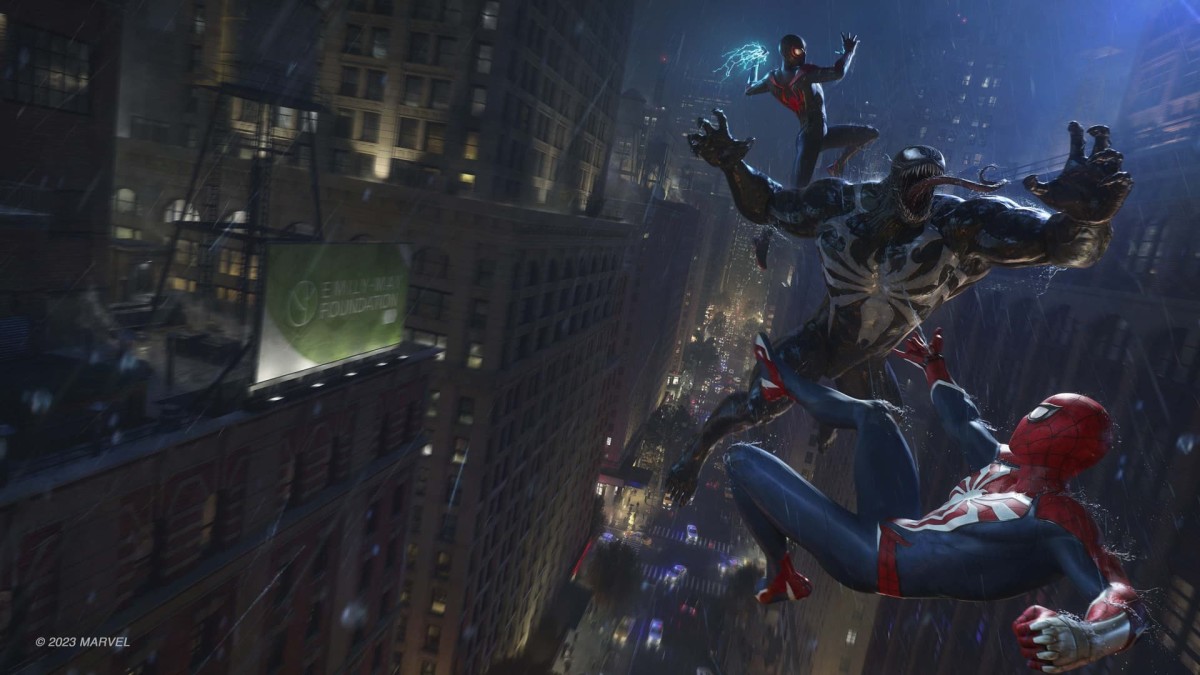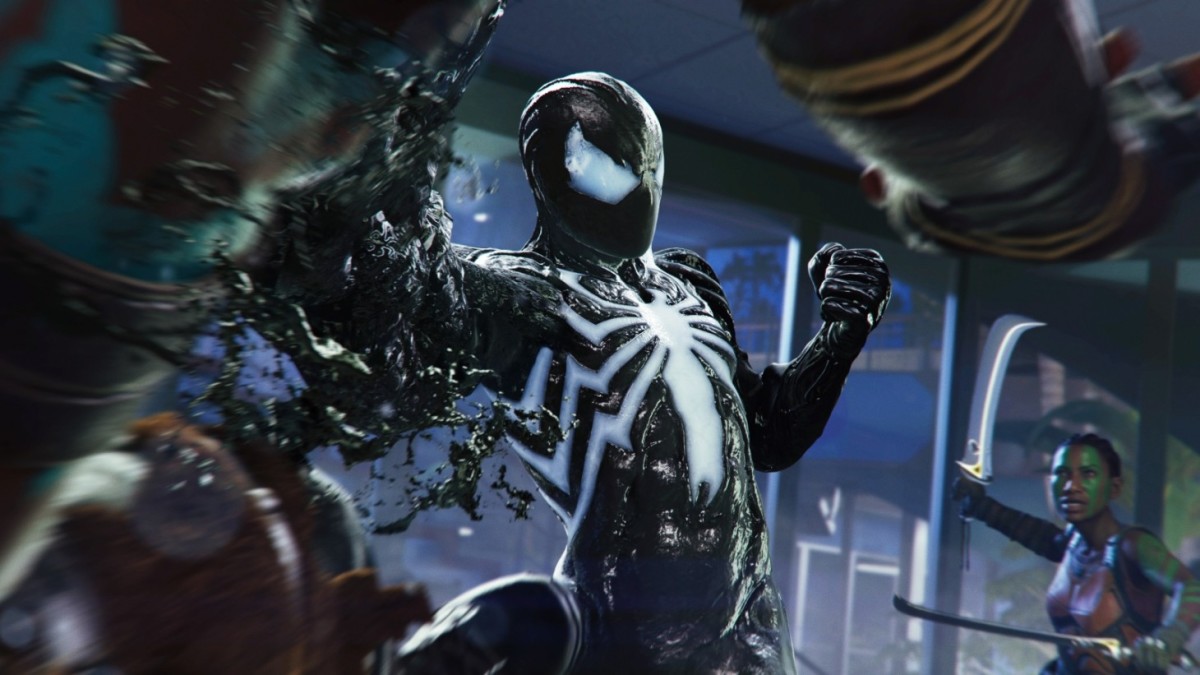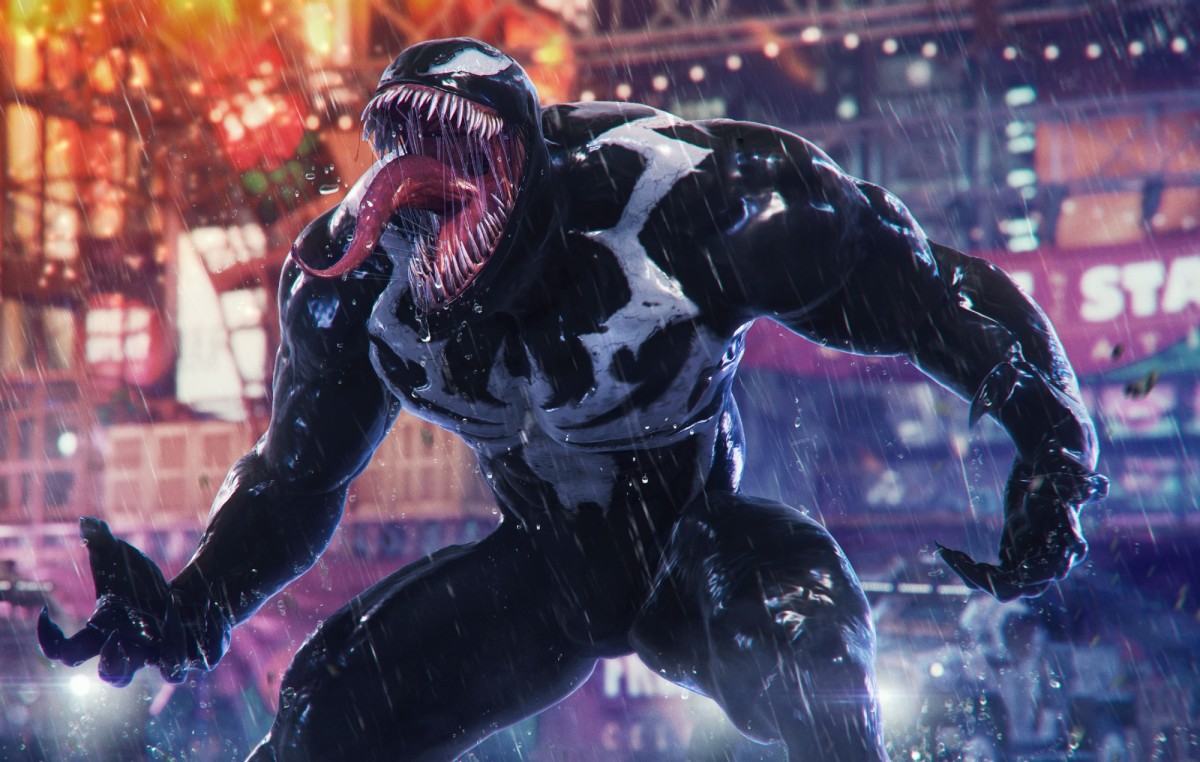Marvel’s Spider-Man 2 review: I wanna web up in a city that never sleeps

Insomniac gets Spider-Man. Your first interaction with the world is to thwip out a web line and hurtle between two skyscrapers. You’re already in the air, time slows, the prompt appears – “Press R2 to swing” – and that’s the fantasy nailed in the first few seconds. Where other games teach you to walk and move your head, Marvel’s Spider-Man 2 throws you out of a window.
Marvel’s Spider-Man was a fun time, but this sequel is an improvement in almost every way that matters. The first game had great combat, slick traversal, and a heartfelt story. It was the side content that dragged it down – a gorgeous open world filled with repetitive, by-the-numbers checklists.
Part two still has some repetition, but it does an excellent job of mixing things up and playing with your expectations just when you think it’s settling into a groove. It also throws in some more personal side stories that anchor both Miles Morales and Peter Parker to New York, reminding us that, while the main story’s stakes are high, they’re still friendly neighborhood Spider-Men.

As you probably know from pre-release footage, both Miles and Peter are playable. Miles takes the lead in some missions, Peter swings into action for others, and you can switch between both at almost any time while exploring the city. It’s a story about the cost of being a hero, knowing when to ask for help, and how power can corrupt even the most virtuous mind.
Nadji Jeter and Yuri Lowenthal are fantastic as Miles Morales and Peter Parker, and Laura Bailey gets more chance to shine as Mary Jane Watson this time around, too. In a world with so many different versions of these characters, this core trio is one of the best, backed up by a deeper story that lets each of them explore a new dynamic of their character. Peter Parker is trying to find where he fits in a world where there are two Spider-Men, Miles Morales hopes to figure out how to fill Peter’s shoes, and Mary Jane is figuring out how to step outside of Peter’s shadow.
Each of the characters’ playable sections attempts to answer the story’s questions, but it’s probably best encapsulated in the brief Mary Jane missions. In the first game, these were frustrating stealth sections that outstayed their welcome, but here Mary Jane is much more capable.

There’s a part early on where she needs to find a safe combination and it happens to be “0451”, a code used by immersive sim developers to wink at the audience, telling them this is a game where you have freedom. While Mary Jane’s sections aren’t quite on the level of an immersive sim, they are much more open, filled with a variety of routes, and she’s not shy about sticking people with a taser.
Obviously, the meat of the game has you playing as the Spider-Men. As before, traversal through this pin-sharp recreation of New York is the highlight – it is so smooth and enjoyable that I ended up completing every side quest and finding every collectible, which I never do. It’s one of those games you can play for the sake of playing it – the movement and controls are some of the best in video games.
I was a little skeptical before I got my hands on it, but the introduction of the web wings – essentially a wingsuit – only add to the thrill of moving through the city. Catching wind tunnels to build up speed before arcing up, diving down, and swinging at max speed feels incredible, and it’s a joy to flow these abilities into each other – there’s almost an extreme sports game quality to it.

The web wings are particularly handy for navigating between New York’s islands when you’re between the bridges, and when you inevitably mess it up, you can even skid across the water if you’ve still got enough speed. The rush of the wind, how leaves kick up out of trees as you swing through their foliage, and how the beeping of NYC traffic whines in and out of range all add up to lend the game a real sense of speed.
This carries over to combat, too. As in the last game, you move like a gymnast, flipping over people’s heads and sliding between legs when you dodge attacks. Punches and kicks come in lightning-quick combos, and you’re able to use webs and gadgets to pin people down. Get someone next to a wall or vehicle and you can use the environment and hit them like you’d dribble a basketball. I particularly like how cars rock on their suspension when you slam someone into one. When a fight ends, enemies are strewn all over – flopped backward over benches, dangling from street lamps, and webbed, wriggling on walls.
The main new addition to combat is the ability to parry attacks, which works exactly how it does in most other games, requiring a well-timed tap of a button to throw the enemy off balance when they attack. It’s a nice extra option to showboat during ordinary fights and it’s damn near essential when you’re facing off against a boss.

Unfortunately, boss fights are probably the game’s weakest area. I have to applaud Insomniac for not resorting to gimmicks, but all that’s left is an ordinary battle against enemies with multiple health bars. They’re forgettable as a result.
Later, you get access to a whole new suite of abilities attached to the symbiote suit. Watching the suit in action in trailers really doesn’t do it justice. Insomniac has done a stellar job of lending the suit a sense of raw power, making you feel almost unstoppable once you master its range of abilities. This melds with the story’s “power corrupts” theme, too. The symbiote has a strong will and there’s not much separating Peter Parker from Venom.
Venom took the spotlight when the game was initially revealed, but he’s not in the game as much as you’d think. While this means he doesn’t outstay his welcome – and some of the best parts of the game are centered around him – it means that much of the focus is instead on Kraven, who isn’t very compelling as a villain. He’s basically The Predator, but instead of being an alien, he’s a hench dude who wants to fight worthy opponents, backed up by generic mercenaries.
Marvel’s Spider-Man 2 won’t do anything that blows you away, but it doesn’t matter when a game plays, looks, and sounds as good as this. It’s an improvement over the first game and proves how polished and slick a sequel can be when the developer is free to revisit and refine on top of solid foundations. Now we just cross our fingers and pray that Insomniac gets an 18-rating for its Wolverine game because it just might pull it off again.
Score: 9/10
- Gameplay: 9/10
- Visuals: 9/10
- Story: 8/10
- Audio: 9/10
Marvel’s Spider-Man 2 performance
If you have a fancy TV, Marvel’s Spider-Man 2 is one of the best-performing games you can play on PS5, thanks to VRR. With graphics mode enabled, it’s a solid 40fps with ray-traced reflections and all the bells and whistles. It looks sharp enough to cut your finger, and smooth frame pacing means you won’t miss the extra 20fps from standard performance mode.
Version tested: PS5
